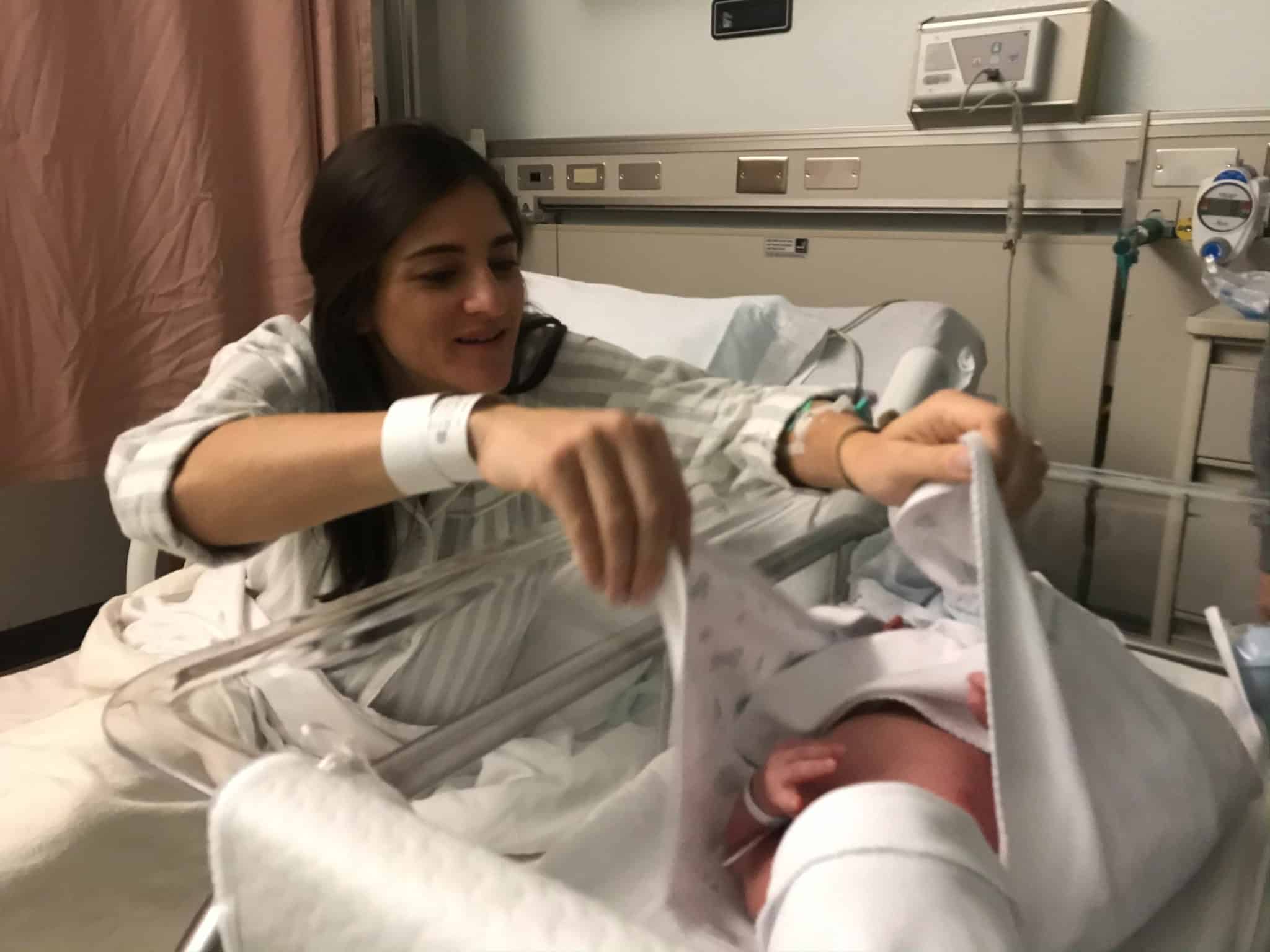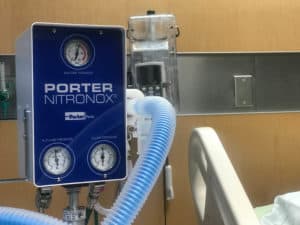View Larger Image

Vivanna Imbert wraps newborn Diego.
UAMS First in Central Arkansas to Use Nitrous Oxide for Laboring Moms
| Nurses, obstetricians and midwives in UAMS Labor and Delivery are excited about a new option to relieve pain for laboring mothers. In January, UAMS Medical Center became the first hospital in central Arkansas to offer nitrous oxide during labor.
Nitrous oxide, commonly known as laughing gas, is sometimes used during dental procedures. This option is gaining popularity in the United States, but has been used in practice for centuries in other parts of the world.
Vivianna Imbert was the first patient to use nitrous oxide at UAMS. Her baby boy, Diego, was born Jan. 15 and weighed 6 lbs.,
2 oz. Diego is the second child of Imbert and her husband, Gabriel Hernandez, M.D. During her first delivery Imbert used Demerol to relieve moderate pain. She says the nitrous oxide made her feel more in control.
“You still feel the contractions, but the pain is not as severe,” Imbert said. “You don’t feel as zoned out as you could be with other medication.”
It was at her last appointment before giving birth that Imbert’s obstetrician, Melissa Helmich, M.D., told her the hospital would begin offering nitrous oxide on Jan. 15.
“My boy behaved really well and waited until that day to make his debut. I went into labor at midnight,” Imbert said.
“She was in labor about 10 hours and then she started using nitrous oxide for about the last two hours,” Helmich said. “She did really well. The nitrous oxide doesn’t take away all the pain because labor hurts, but it definitely reduced the anxiety and helped her focus on what she needed to do.”
The patient is in complete control of how much nitrous oxide she takes. She breaths in and out into a mask as she begins to feel a contraction and is the only one authorized to touch the mask during labor.
“Sometimes I would use it longer, depending on how I felt,” Imbert said. “You would feel zoned out, just a little – but still very present.”
“I love the idea of it because we have a lot of patients who don’t want an epidural, but they need just a little help to ease the pain and anxiety that comes with labor,” said labor and delivery nurse Carrie Smith, R.N.
Smith was instrumental in executing the order for nitrous oxide. It was the first one f
or the hospital and there wasn’t a precedent. She walked Imbert through how to use the mask during delivery.
“I was determined to make sure this happened for her as smoothly as possible,” Smith said.
As soon as you breathe outside the mask, the effects start to wear off. The gas doesn’t affect the baby at all. Doctors say they have already had patients who are early in their pregnancy ask about the option.
“Our goal is that patients can sit, stand, walk or do whatever feels most comfortable to them,” Helmich said. “With the gas, you have the freedom of having as unmedicated or as natural of a birth you desire. We’re committed to providing patients with all the resources possible to make their delivery successful.”
And if a mother decides that it isn’t what she wants, she can still opt for an epidural anytime.
“I definitely recommend this to anyone,” Imbert said. “I would use it again.”



